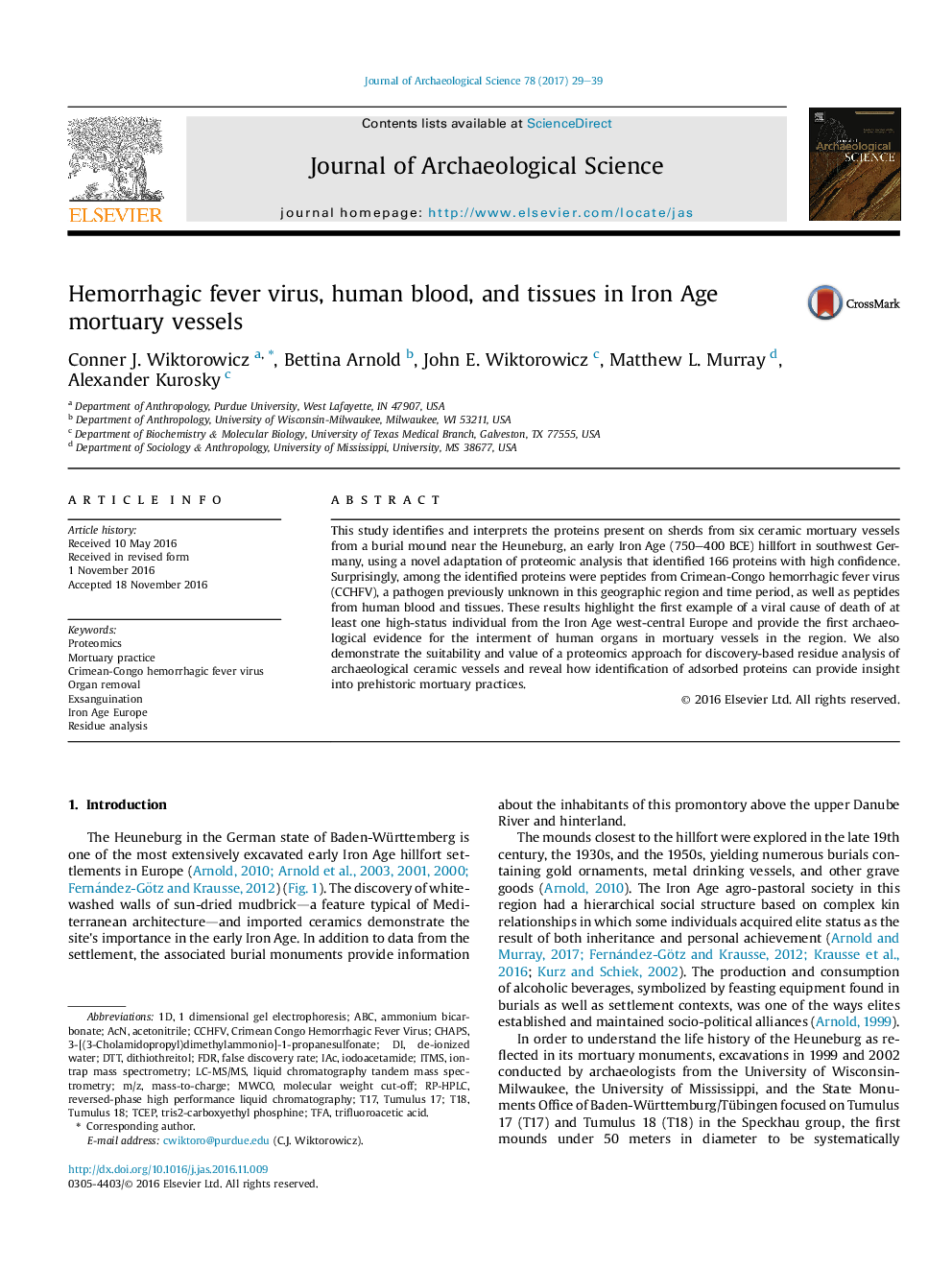| کد مقاله | کد نشریه | سال انتشار | مقاله انگلیسی | نسخه تمام متن |
|---|---|---|---|---|
| 5112128 | 1483882 | 2017 | 11 صفحه PDF | دانلود رایگان |
عنوان انگلیسی مقاله ISI
Hemorrhagic fever virus, human blood, and tissues in Iron Age mortuary vessels
ترجمه فارسی عنوان
ویروس خونریزی خون، خون انسانی و بافت در عروق مرطوب نگه داشته شده است
دانلود مقاله + سفارش ترجمه
دانلود مقاله ISI انگلیسی
رایگان برای ایرانیان
کلمات کلیدی
ITMSCCHFVIACRP-HPLCTFAMWCOMortuary practiceACNDTTFDRABC3-[(3-cholamidopropyl)dimethylammonio]-1-propanesulfonate - 3 - [(3-کلامیدوپروپیل) دی متیل آمونیو] -1-پروپان سولفوناتLC-MS/MS - LC-MS / MSm/z - m / zDe-ionized water - آب یونیزه شدهAcetonitrile - استونیتریلTrifluoroacetic acid - اسید TrifluoroaceticAmmonium bicarbonate - بی کربنات آمونیومResidue analysis - تجزیه و تحلیل باقی ماندهmass-to-charge - جرم به اتهامdithiothreitol - دیتیوتریتولTCEP - ساکتIon-trap mass spectrometry - طیف سنج جرم یونی تلهExsanguination - عصبانیتfalse discovery rate - میزان کشف کاذبCrimean Congo hemorrhagic fever virus - ویروس تب خونریزی کریمه کنگوCrimean-Congo Hemorrhagic Fever Virus - ویروس قلمرو هموراژیک کریمه-کنگوProteomics - پروتئومیکسCHAPS - چاپسmolecular weight cut-off - کاهش وزن مولکولیliquid chromatography tandem mass spectrometry - کروماتوگرافی مایع اسپکترومتری دو طرفهreversed-phase high performance liquid chromatography - کروماتوگرافی مایع با کارایی بالا با فاز برگشت پذیرiodoacetamide - یووداکتامید
موضوعات مرتبط
مهندسی و علوم پایه
مهندسی مواد
دانش مواد (عمومی)
چکیده انگلیسی
This study identifies and interprets the proteins present on sherds from six ceramic mortuary vessels from a burial mound near the Heuneburg, an early Iron Age (750-400 BCE) hillfort in southwest Germany, using a novel adaptation of proteomic analysis that identified 166 proteins with high confidence. Surprisingly, among the identified proteins were peptides from Crimean-Congo hemorrhagic fever virus (CCHFV), a pathogen previously unknown in this geographic region and time period, as well as peptides from human blood and tissues. These results highlight the first example of a viral cause of death of at least one high-status individual from the Iron Age west-central Europe and provide the first archaeological evidence for the interment of human organs in mortuary vessels in the region. We also demonstrate the suitability and value of a proteomics approach for discovery-based residue analysis of archaeological ceramic vessels and reveal how identification of adsorbed proteins can provide insight into prehistoric mortuary practices.
ناشر
Database: Elsevier - ScienceDirect (ساینس دایرکت)
Journal: Journal of Archaeological Science - Volume 78, February 2017, Pages 29-39
Journal: Journal of Archaeological Science - Volume 78, February 2017, Pages 29-39
نویسندگان
Conner J. Wiktorowicz, Bettina Arnold, John E. Wiktorowicz, Matthew L. Murray, Alexander Kurosky,
